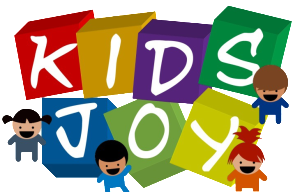Stages of Child Development and Appropriate Digital Use in Each Stage
The digital world comes with it’s pros and cons. Finding the right balance is always tough. Here are some general principles to navigate digital use in each stage of child development.
Baby 0 – 1.5 years

Characteristics:
- Attachment
- High physical development
Digital Guidelines:
- Avoid gadgets completely
- Be present with the child and have intentional screen free play time
- Do not use screens to stop the child from crying
- Do not use screens for food time or at sleep time
Toddler 1.5 – 2 years

Characteristics:
- Establishing Independence
- Focus up to 1 min
- Establish parental authority
Digital Guidelines:
- Max of 30 mins screen time a day – ideally not more than 10 mins at one time.
- Have a transition time where you tell the child that the screen will be switch off after the video ends
- Do not leave a child unattended with a gadget
- Carefully check programmes or videos before showing to children for values, safety, etc.
- Be present with the child and have intentional screen free play time
- Do not use screens to stop child from crying
- Do not use screens for food time or at sleep time
- Be aware of technology addiction (have no technology days)
Preschool 3 – 5 years

Characteristics:
- Initiative
- Begins to play with other children
- Focus up to 3 mins
Digital Guidelines:
- Max of 1 hour screen time a day – ideally not more than 20 mins at one time
- Carefully check programmes or videos before showing to children for values, safety, etc.
- Start communicating with child about what is safe and what is not. Engage with the child about what they are watching
- Use technology to engage with the child – learning apps
- Be present with the child and have intentional screen free play time
- Do not use screens for stopping tantrums, food time or at sleep time
- Be aware of technology addiction (have no technology days)
School Age 6- 8 years

Characteristics:
- Growing Self Esteem
- Character Development
- Communication
Digital Guidelines:
- 5hours a week
- Open communication with child about what is good and what is not. Engage with the child about what they are watching
- Use technology to engage and teach the child – learning apps, video games, family movies
- Allow child to choose shows or videos they would like to watch
- Have times and spaces that are technology free (meal times, family times, bedroom)
- Teach child about online safety, etc.
Pre Adolescent 9 – 12 years

Characteristics:
- Transition from childhood to adolescence
- Emotional change
- Increasingly independent
- Wants time alone
Digital Guidelines:
- 7 – 8 hours a week
- Open communication
- No social media till age 13
- Walk with children through some of the social media apps
- Teach them about sharing information, dangers of internet (predators, information going out, etc.)
- Teach them online etiquette
- Encourage them to have non digital hobbies (reading, playing down, art, craft, etc.)
- Have times and spaces that are technology free (meal times, family times, bedroom)
Adolescent 13 – 17 years

Characteristics:
- Transition from adolescent to adulthood
- Growing autonomy
- Critical thinking
- Wants time alone
Digital Guidelines:
- As parents, accept that social media is part of their social development and technology is part of their intellectual development
- Help them decide what is an appropriate amount of digital time, Ask them to make a time log of the actual amount of time they currently spend on social media and screens during the day
- Open communication, but give them their space for privacy
- Social media apps moving from more control to complete independence (13 – 16)
- Be a coach
- Keep talking about internet safety, etiquette etc.
- Have times and spaces that are technology free (meal times, family times, bedroom)
- Do fun things with them (go out for coffee, salon, adventure activities, paint ball, holidays, etc.)
These are just some general guidelines. Each child is different, and each family will have their own way of doing things. But don’t let your child just get sucked into the world of technology. Give it some thought and be intentional about the way you plan to go about it.


Trackbacks/Pingbacks